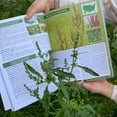Threats To Manila Bay's Vibrant Ecosystem And Its Future

Table of Contents
Pollution: A Major Threat to Manila Bay's Ecosystem
Pollution is arguably the most significant threat to the Manila Bay ecosystem. Untreated waste and agricultural runoff drastically alter water quality, harming marine life and disrupting the delicate balance of this vital ecosystem.
Industrial and Domestic Waste
The influx of untreated sewage, industrial effluents, and plastic pollution into Manila Bay is catastrophic. This contamination directly impacts water quality and marine life in several ways:
- Increased levels of heavy metals: Industrial discharges often contain heavy metals like mercury and lead, bioaccumulating in the food chain and posing significant risks to human health through seafood consumption. These heavy metals contaminate the sediments and water column, impacting the Manila Bay ecosystem for years.
- Eutrophication leading to algal blooms: Excess nutrients from sewage and industrial waste cause eutrophication, leading to explosive growth of algae. These blooms deplete oxygen levels, creating "dead zones" where marine life cannot survive. This is a severe problem impacting the overall health of the Manila Bay ecosystem.
- Harm to coral reefs and seagrass beds: Pollution degrades coral reefs and seagrass beds, vital habitats for numerous marine species. Sedimentation from pollution smothers these ecosystems, reducing their ability to support biodiversity. This loss of habitat further weakens the Manila Bay ecosystem.
- Entanglement and ingestion of plastics by marine animals: Plastic pollution is a pervasive issue, with marine animals becoming entangled in plastic debris or ingesting microplastics, leading to injury, starvation, and death. This severely impacts the already stressed Manila Bay ecosystem.
Specific examples include the untreated wastewater from numerous industries along the bay's shoreline and the massive amounts of plastic waste that end up in the water, reflecting the poor waste management systems in the region. Studies have shown alarmingly high levels of heavy metals in Manila Bay's sediments and fish.
Agricultural Runoff
Agricultural activities in the areas surrounding Manila Bay contribute significantly to its pollution. Fertilizers, pesticides, and herbicides used in farming run off into the bay, causing widespread ecological damage:
- Nutrient pollution causing algal blooms: Similar to industrial waste, agricultural runoff contributes to eutrophication, fueling harmful algal blooms and creating oxygen-depleted zones. This dramatically affects the Manila Bay ecosystem.
- Pesticide contamination affecting marine organisms: Pesticides used in agriculture contaminate the water, harming marine organisms directly or indirectly through bioaccumulation. This contamination threatens the diverse species within the Manila Bay ecosystem.
- Soil erosion leading to sedimentation and habitat loss: Unsustainable agricultural practices contribute to soil erosion, which leads to increased sedimentation in Manila Bay. This sedimentation smothers seagrass beds and coral reefs, destroying crucial habitats and disrupting the Manila Bay ecosystem's delicate balance.
The intensive rice cultivation and other agricultural practices in the surrounding provinces are major contributors to this pollution, highlighting the need for sustainable agricultural methods to protect the Manila Bay ecosystem.
Unsustainable Fishing Practices: Depleting Manila Bay's Resources
Overfishing and destructive fishing methods are severely depleting Manila Bay's fish stocks and disrupting the ecosystem's delicate balance.
Overfishing
Overfishing leads to a decline in fish populations and disrupts the food web, impacting the entire Manila Bay ecosystem.
- Decline in fish stocks: Unsustainable fishing practices have led to a drastic decline in several commercially important fish species, threatening the livelihoods of many communities that depend on fishing for their sustenance and income. The overfishing directly impacts the Manila Bay ecosystem.
- Disruption of the food web: The removal of key species disrupts the natural balance of the food web, potentially leading to the collapse of entire ecosystems within the Manila Bay ecosystem.
- Loss of biodiversity: Overfishing reduces biodiversity, leaving the ecosystem more vulnerable to environmental changes and less resilient to other stresses.
Statistics from the Bureau of Fisheries and Aquatic Resources (BFAR) show a significant decline in fish catches in Manila Bay over the past decades, indicating the seriousness of overfishing on the Manila Bay ecosystem.
Destructive Fishing Methods
Dynamite fishing and other destructive practices cause irreparable damage to Manila Bay's marine habitats and biodiversity.
- Coral reef destruction: Dynamite fishing completely devastates coral reefs, destroying essential habitats for countless marine species and reducing overall biodiversity within the Manila Bay ecosystem.
- Habitat loss: Destructive fishing practices lead to widespread habitat loss, impacting not only target species but also many non-target species dependent on these habitats, negatively impacting the Manila Bay ecosystem.
- Collateral damage to non-target species: These methods often result in the unintentional killing of many non-target species, including endangered marine mammals and birds, further damaging the already fragile Manila Bay ecosystem.
The use of illegal fishing methods continues to be a major challenge, requiring stronger enforcement and community involvement to protect the Manila Bay ecosystem.
Coastal Development and Habitat Loss: Shrinking Manila Bay's Natural Spaces
Rapid coastal development is drastically reducing the natural habitats crucial to the health of the Manila Bay ecosystem.
Reclamation Projects
Land reclamation projects for infrastructure development destroy vital coastal habitats.
- Loss of coastal wetlands, mangrove forests, and seagrass beds: These projects often involve the filling of wetlands and mangroves, destroying vital habitats that support biodiversity and protect coastlines. The loss of these habitats negatively affects the Manila Bay ecosystem.
- Disruption of marine ecosystems: Reclamation disrupts natural water flow, sedimentation patterns, and nutrient cycles, significantly impacting the overall health and productivity of the Manila Bay ecosystem.
Numerous reclamation projects in Manila Bay have already led to the loss of significant areas of crucial coastal habitats, highlighting the urgent need for more sustainable coastal development practices.
Coastal Construction
Coastal construction further contributes to habitat loss and ecosystem disruption.
- Habitat destruction: Construction projects directly destroy coastal habitats through physical destruction and increased pollution. This further damages the Manila Bay ecosystem.
- Increased coastal erosion: Construction can accelerate coastal erosion, leading to further habitat loss and potentially impacting coastal communities.
- Disruption of natural processes: Construction alters natural processes such as sediment transport and water circulation, impacting the Manila Bay ecosystem's overall health.
Environmental impact assessments for coastal construction projects are often inadequate, failing to fully assess the long-term consequences on the Manila Bay ecosystem.
Conclusion
The future of Manila Bay's vibrant ecosystem hangs in the balance. The combined threats of pollution, unsustainable fishing practices, and coastal development are severely impacting its biodiversity and ecological health. Addressing these challenges requires a multifaceted approach, including stricter enforcement of environmental regulations, sustainable resource management, community engagement, and investment in wastewater treatment infrastructure. Only through concerted efforts can we protect and restore the Manila Bay ecosystem, ensuring its health and vitality for generations to come. Let's work together to safeguard the Manila Bay ecosystem and its rich biodiversity. Join the movement to protect the future of the Manila Bay ecosystem and its unique and valuable marine life.

Featured Posts
-
 London Klub Meldes Varm Pa Kasper Dolberg Transferrykter
May 30, 2025
London Klub Meldes Varm Pa Kasper Dolberg Transferrykter
May 30, 2025 -
 San Diego Plane Crash No Runway Lights Faulty Weather System What We Know
May 30, 2025
San Diego Plane Crash No Runway Lights Faulty Weather System What We Know
May 30, 2025 -
 La Inspiradora Frase De Un Ex Top 3 Mundial A Marcelo Rios
May 30, 2025
La Inspiradora Frase De Un Ex Top 3 Mundial A Marcelo Rios
May 30, 2025 -
 A Foragers Guide Identifying And Roasting The Carrots Wild Cousin
May 30, 2025
A Foragers Guide Identifying And Roasting The Carrots Wild Cousin
May 30, 2025 -
 Hugh Jackman And Deborra Lee Furness A Look Back At Their Relationship And Its Dissolution
May 30, 2025
Hugh Jackman And Deborra Lee Furness A Look Back At Their Relationship And Its Dissolution
May 30, 2025
